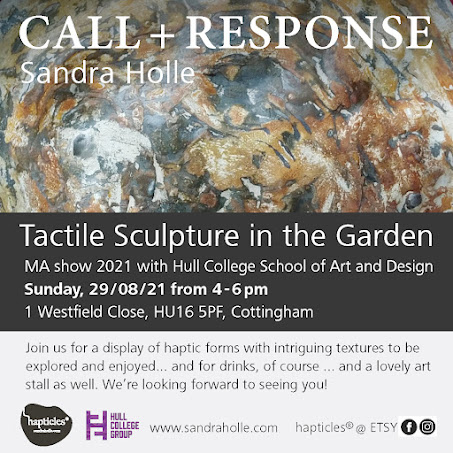Concrete recap
https://sandraholleart.blogspot.com/2020/11/ruth-asawa.html
Also, through further small studies I realised that those tubular forms, initially inspired by nerves and their protective coating, are a great adaptable, modular foundation with the potential to be scaled up and further interpreted into a bigger body of work. More about the process in the following post.
My knowledge about concrete comes from reading and research about building materials, watching demonstration videos, interviews and a lot of practice, trial and error and fun with the material since I started experimenting about three years ago.
I found the concrete sculptures by Katherine Stanek, https://www.katherinestanek.com/home
https://www.youtube.com/watch?v=L0QmiY30KUc
so mesmerising and moving, I started to get the basic materials soon to try for myself. I have worked out my own formulas and ratios of mixtures since. I have in mind the volatile character of concrete as well and in my mixes I aim to use as little cement content as possible, substituting with alternatives like ash to increase stability. Sometimes I would build up the base layers in papercrete adding shredded paper scraps to the mix. This also reduces the weight of the final form. To further reduce weight and material, I build my supporting structure from pet bottles as opposed to reinforcement steel and wire. This also decreases the risk of corrosion within the sculpture which can lead to cracks.
For more delicate forms, I use looped or knitted plastic strips that I cut from PET bottles, which I started in my second year of the degree in 2018/19. I will, of course, only know for sure if the PET structures are really a stable enough alternative in the long term.
Concrete
is very versatile to work with. It can be cast, modelled, carved, sanded and given the most intricate and intriguing surfaces, even a polished glossy finish.
I started off working in clay years ago but the fact that I usually would have limited access to a kiln also makes concrete an attractive alternative. I can still treat it like clay. I can add pigments and layers to build up my forms, I can take away and add material until I have the result I was going for.
Whist working in concrete though, I learned that it is helpful to approach a project with an open mind, a basic idea and let the material guide me as well. Concrete is, after all, a material that can crack in unpredictable ways and the different stages of curing or hydrating are important when thinking about shapes and which tools to use from a simple plastic tool in the so called green stage when still soft up to the chisels and power tools after a week of curing. The limited control I have over the outcome is exciting and opens new possibilities to the piece I am working on.
some of my work so far:
spinning wall pieces, between 10 and 25 cm diameter
Other good sources of information for me, especially for casting in concrete, are
Concrete Handbook for Artists - Technical Notes for Small-scale Objects by Andrew Goss,
or
“Sculpture in Concrete” by John W Mills (basics and mould making, casting)
I found some critical information on concrete in in "The Guardian"s Concrete Week Feature very useful in terms of sustainability and environmental impact. It made me think about how to decrease the cement ratio in my mixes, use surplus mixes in small scale work, reuse failed attempts as crushed aggregates etc.
https://www.theguardian.com/cities/series/guardian-concrete-week
Concrete has not the best reputation when it comes to environmental friendliness. In fact, it has been labelled "the most destructive material on earth" by the contributors and researchers of this feature. Concrete can also have a rather cold feel to it and is often associated with greyness and dullness. (Unless used in modern architecture or interior designwhen it's stylish and trendy atm) I felt challenged to use the material in a different way in the hope I would eventually be able to turn the image around, at least what it's appearance is concerned and use it to communicate my ideas.









Comments
Post a Comment